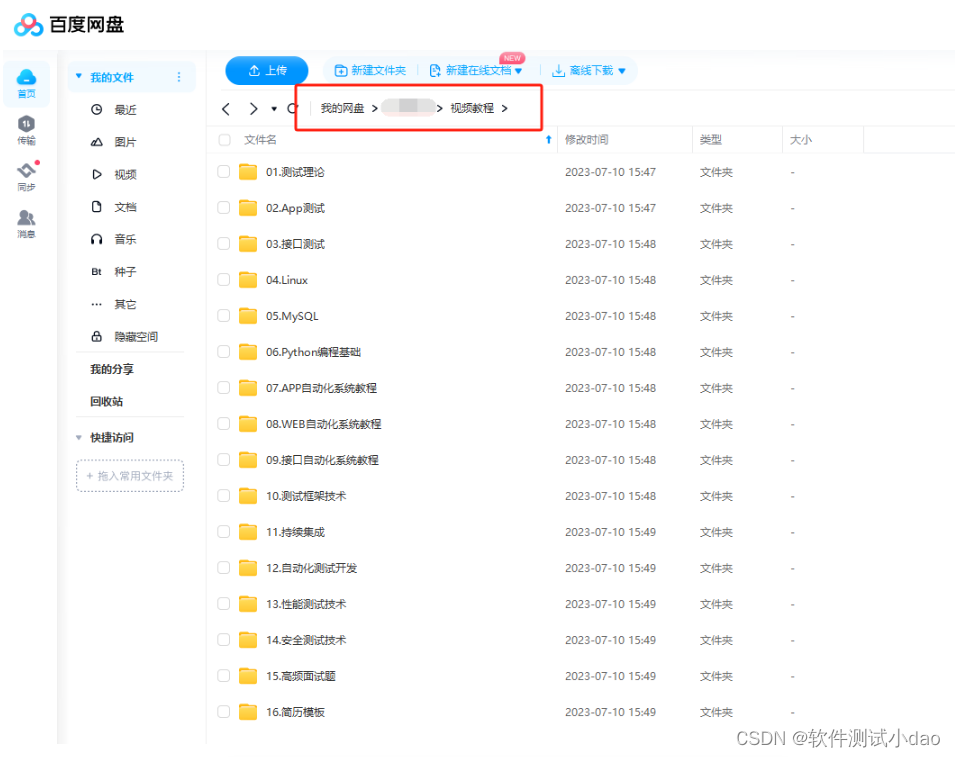一、yaml配置文件
将日志中的常用配置,比如日志器名称、日志器等级及格式化放在配置文件中,在配置文件config.yaml中添加:
| 1 2 3 4 |
|
封装logging类,读取yaml中的日志配置。
二、读取yaml
之前读写yaml配置文件的类已经封装好,愉快的拿来用即可,读取yaml配置文件中的日志配置。
yaml_handler.py
| 1 2 3 4 5 6 7 8 9 10 11 12 13 |
|
三、封装logging类
在common目录下新建文件logger_handler.py,用于存放封装的logging类。
封装思路:
- 首先分析一下,logging中哪些数据可以作为参数?比如日志器名称、日志等级、日志文件路径、输出格式,可以将这些放到__init__方法里,作为参数。
- 其次,要判断日志文件是否存在,存在就将日志输出到日志文件中。
- 最后,logging模块已经封装好了Logger类,可以直接继承,减少代码量。
这里截取logging模块中Logger类的部分源码。
| 1 2 3 4 5 6 7 8 9 10 11 12 13 14 15 16 17 18 19 20 21 22 23 24 25 26 27 28 29 30 31 |
|
接下来,我们开始封装logging类。
logger_handler.py
| 1 2 3 4 5 6 7 8 9 10 11 12 13 14 15 16 17 18 19 20 21 22 23 24 25 26 27 28 29 30 31 32 |
|
四、logging实战
在登录用例中运用日志模块,到底在登录代码的哪里使用日志?
- 将读取的用例数据写入日志、用来检查当前的用例数据是否正确;
- 将用例运行的结果写入日志,用来检查用例运行结果是否与预期一致;
- 将断言失败的错误信息写入日志。
接下来直接上代码,在登录用例中添加日志。
test_login.py
| 1 2 3 4 5 6 7 8 9 10 11 12 13 14 15 16 17 18 19 20 21 22 23 24 25 26 27 28 29 30 31 32 33 34 35 36 37 38 39 40 41 42 |
|
控制台日志输出部分截图:

日志文件输出部分截图:

现在我也找了很多测试的朋友,做了一个分享技术的交流群,共享了很多我们收集的技术文档和视频教程。
如果你不想再体验自学时找不到资源,没人解答问题,坚持几天便放弃的感受
可以加入我们一起交流。而且还有很多在自动化,性能,安全,测试开发等等方面有一定建树的技术大牛
分享他们的经验,还会分享很多直播讲座和技术沙龙
可以免费学习!划重点!开源的!!!
qq群号:485187702【暗号:csdn11】最后感谢每一个认真阅读我文章的人,看着粉丝一路的上涨和关注,礼尚往来总是要有的,虽然不是什么很值钱的东西,如果你用得到的话可以直接拿走! 希望能帮助到你!【100%无套路免费领取】























 355
355

 被折叠的 条评论
为什么被折叠?
被折叠的 条评论
为什么被折叠?








